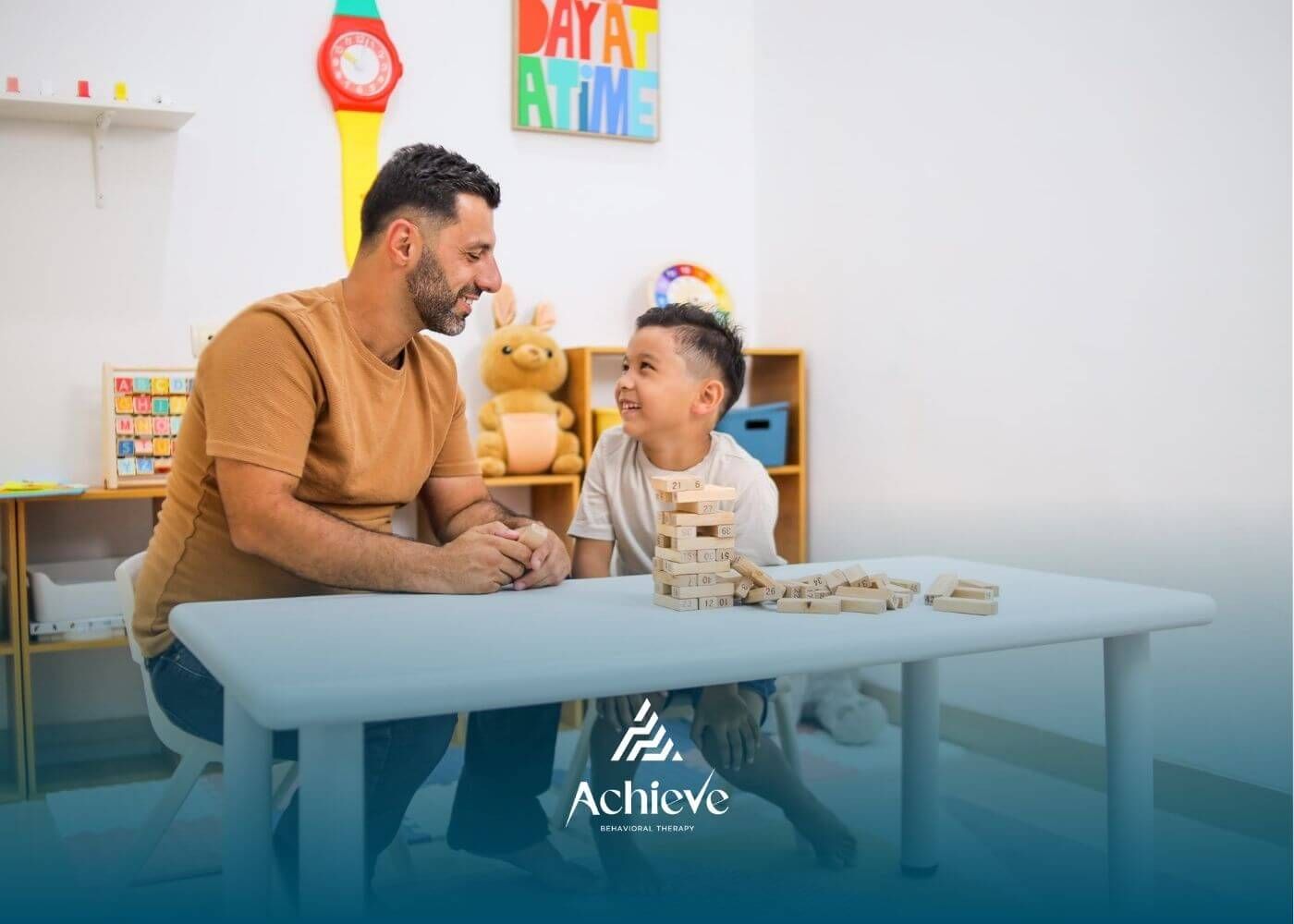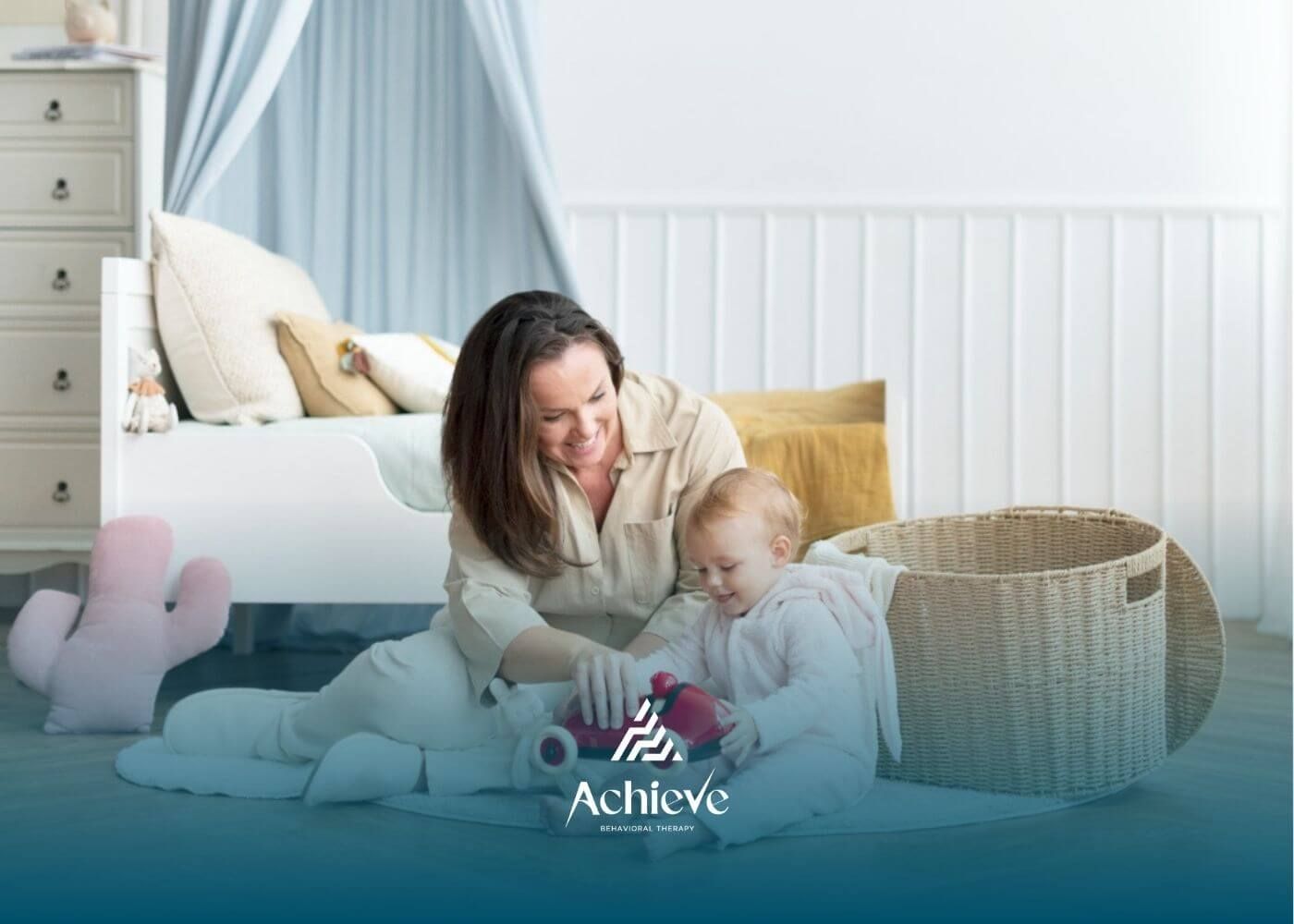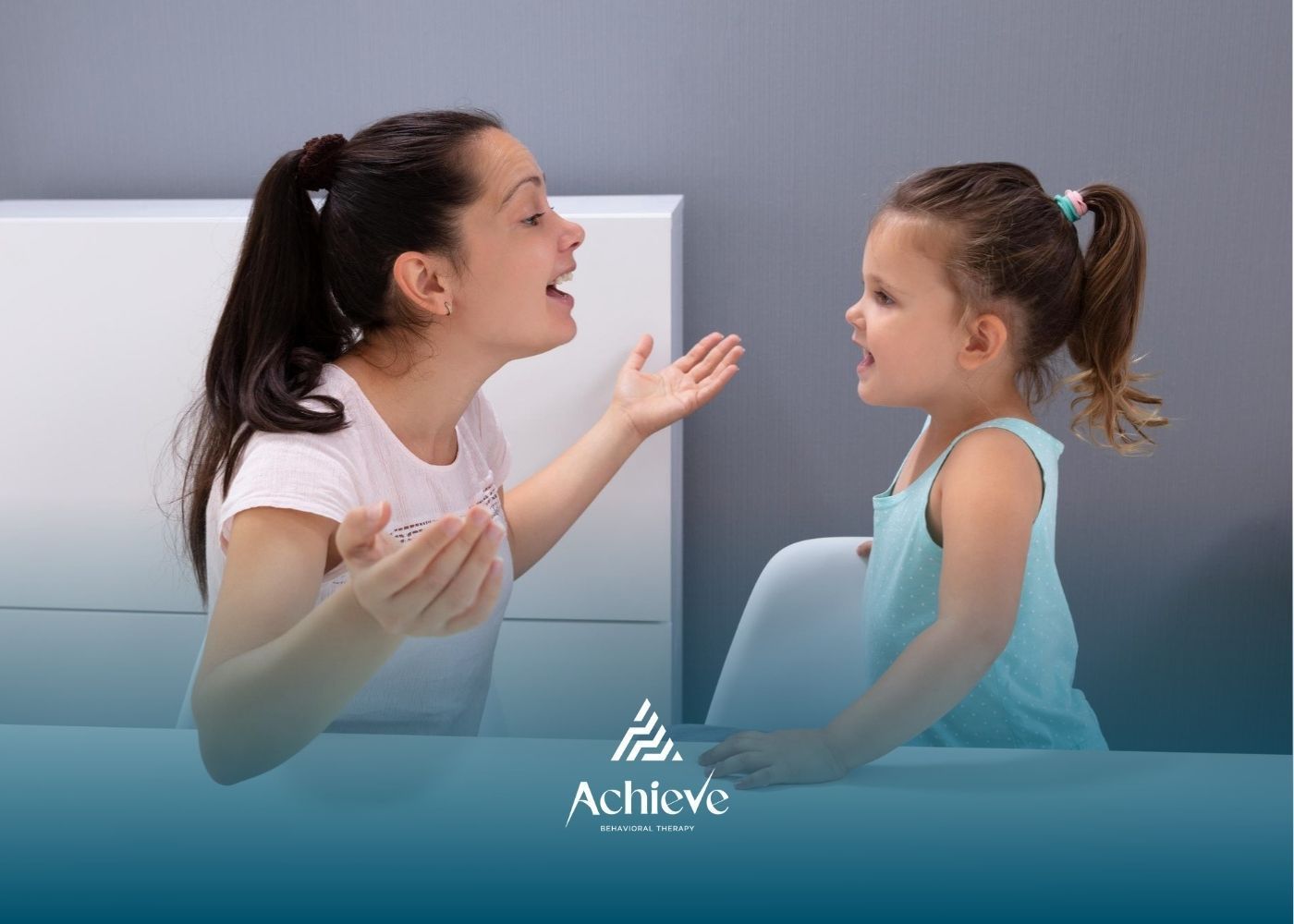The Pros and Cons of Home-Based or Center-Based ABA Therapy

Choosing the right therapy for your child with autism spectrum disorder can feel like a lot to handle. There are a few therapy choices out there. One of the main ones is ABA therapy. This approach is supported by real evidence. It helps kids face daily challenges and learn new skills.
Families must pick between home-based ABA therapy and center-based ABA therapy. Each one has its own good and bad sides. Knowing how both options work and how they are different can help you pick what is best for your child and their growth. Let’s take a closer look at both options for children who have autism spectrum.
Understanding ABA Therapy for Autism
Applied Behavior Analysis (ABA) therapy uses ideas from behavior analysis to help make positive change in kids’ lives. It works to help with things like talking, social skills, and daily living skills. Many see ABA therapy as a kind of autism treatment. This approach uses strategies based in research, and each plan is made for the child’s unique needs.
Aba therapy works by helping with skill acquisition and handling problems with change or learning. It gives support for children on the autism spectrum by focusing on early intervention and teaching in a structured way. The goal is to help children show progress and hit their developmental goals. All outcomes are tracked and measured to know what is working.
What Is Applied Behavior Analysis (ABA) Therapy?
Applied Behavior Analysis (ABA) therapy is a way to understand and change how people act. It uses rewards and feedback to help shape good behaviors and improve socially significant behaviors. This method tries to improve certain actions in people, especially those with autism spectrum disorder or autism spectrum. ABA helps in building important skills. It also helps people talk and connect better with others.
How ABA Supports Children with Autism in the United States
ABA therapy plays a big role in helping children grow through skill acquisition. It helps children with autism learn, use, and improve their communication skills, adaptive skills, and social interaction. These core skills are key for kids with different developmental needs to do well.
Starting ABA therapy early can give the most help. Early intervention lets children work on their social skills from the start. Structured programs and activities help kids spend time with others, get better at peer interactions, and follow social rules. ABA therapy also teaches important life skills like brushing teeth or learning to use the toilet, which are key to helping children become more independent.
In the U.S., aba therapy is made to support children on the autism spectrum who may have developmental delays. Both parents and therapists work together to set up plans. These plans focus on what the child needs now and what the long-term goals are. With this teamwork, children keep building skills both during therapy and at home. Learning to use these new skills in different place is an important part of overall development and helps the skills stay strong.
Home-Based ABA Therapy Explained
Home-based ABA therapy lets the child stay in a natural environment. Sessions take place where the child feels safe and with familiar surroundings. Therapists work with the family at every step. They make plans that fit what the child needs to learn at home.
This way works well for kids who may get nervous in new places. The child can learn skills in an easy and calm space. With the family involved, home-based aba therapy gives strong help and more chances to grow in the child’s everyday spaces.
How Home-Based ABA Therapy Works
Home-based ABA therapy is about learning in your own home environment. Behavior analysts look at what you need and make a treatment plan just for you. They change their approach to fit what happens every day in the child’s home.
Therapists hold one-on-one sessions and often bring family members in to join the process. For example, they may help kids learn to talk with siblings, tie their shoes, or help out at home, such as folding clothes. These simple lessons help make ABA therapy useful and fit real life.
One big strength of this kind of therapy is that it helps with generalization of skills. When a child learns a new way to communicate or act, it is easier to use these skills in other places if they are practiced often in familiar surroundings. Home-based therapy lets kids feel good, while still giving a plan for behavior management and growth.
Common Benefits of Home-Based ABA Therapy
Choosing home-based ABA therapy brings many good things:
- Being in familiar surroundings helps your child feel safe and at ease. This can make it faster and easier to learn new skills in a setting they know well.
- The therapy is made just for your child and fits what they need.
- Parents can join in and help use the same methods every day.
- This kind of therapy often deals with challenging behaviors that show up at home, so it leads to positive change right where it matters most.
Another big plus is that therapists come right to your home. This way, there is less to worry about, and your child can pay better attention. Families also get helpful ways to keep building new skills during daily life. ABA therapy in familiar surroundings is a great way to work on challenging behaviors and see positive change in your child.
Potential Challenges of Home-Based ABA Therapy
While home-based ABA therapy has many good points, there are some potential challenges to think about:
- Potential distractions can come up. Noise from siblings or sounds from media devices might break up the flow of each therapy session.
- There may be limited resources at home. This means kids often do not get to use some special therapy tools and materials found in aba centers.
- It can be hard to handle behavior management when dealing with a family’s own way of doing things. Sometimes this adds stress.
- It is often not easy to have a fully structured therapy session at home, because you do not get the same controlled environment as you do in center-based models.
Even with these problems, therapists find ways around the issues to get good results. Therapists can give strong tips so that families learn to cut out what gets in the way and to use better ways to work with their children. This helps everyone get closer to real goals in aba therapy.
Center-Based ABA Therapy Explained
A structured environment that you find in a specialized center for ABA therapy helps kids with autism learn faster. This is because there are many resources and trained therapists who know what to do. In ABA centers, each child gets lessons that fit their own growth and needs.
When kids are with their peers at these centers, they get chances for social interaction. They join in group learning, which helps them get along with others. With a team of professionals guiding the way, treatment stays steady and expert. This strong support lets children build good habits and learn to be more independent, step by step.
How Center-Based ABA Therapy Is Structured
Center-based sessions use a step-by-step way of working that helps the child’s progress and make the most progress in a controlled environment. Here, trained therapists give scheduled lessons using special, professional tools that fit each child’s needs and goals.
In this therapy setting, you will find certain places like therapy rooms and play spots. These help create a steady place where kids can grow and learn important skills. There are many resources to use, so kids get to try new things while they practice social and daily life behaviors.
There are several professionals here, including certified behavior analysts. They work as a team to plan and talk about each child’s therapy. If any treatment changes are needed, they can make them during the session, so every time matches well with the child’s steps in growing and learning.
Advantages of Center-Based ABA Therapy
Choosing center-based ABA therapy gives you many important benefits:
- The center has a wider range of resources. This means your child will get the tools needed for treatment made just for them.
- Kids get the chance for peer learning. They enjoy more social interaction, and this helps them build good skills for working with others in groups.
- There is a team of certified behavior analysts who watch over the therapy. They keep checking and improving the way therapy is given.
- Lessons can show what real situations are like. This helps children feel ready to move with confidence into structured environments such as schools.
- Special programs at aba centers are made to fit each child's needs for how they grow and learn.
All of these points show how center-based ABA therapy can help a child get ready to be with other people, not just at home.
Possible Drawbacks of Center-Based ABA Therapy
While center-based therapy works well, there are some things to keep in mind:
- Transition challenges: Kids might have a hard time moving between new places and the routines they have at home.
- There is less flexibility when it comes to schedules than with home sessions, which can make it harder to plan your day.
- An unfamiliar setting: Children may feel uneasy at first, mainly if they are sensitive to sounds, sights, or touch.
- Parents usually have less involvement, since therapy is not taking place in the child’s main environment.
To balance these things, you have to think about what is best for your child’s development, while also keeping their stress as low as you can.
Comparing Home-Based and Center-Based ABA Therapy
Home-based and center-based ABA therapy both have benefits, depending on what the child needs. Home-based ABA therapy takes place in a familiar environment. This helps the child feel safe and calm, so they can learn new skills better and find it easier to manage behavior, despite familiar distractions.
On the other hand, center-based therapy gives the child a structured environment, where there are more chances for social interaction with other kids and trained therapists. This setup helps the child use their new skills in different places, not just at home. In the end, the best choice depends on the child, what their family wants, and what works well for them.
Similarities Between Home and Center-Based Approaches
Both home-based and center-based ABA therapy work to help the child build better social skills and handle daily life by using behavioral principles. In both settings, the sessions be planned to fit each child's individual needs and help them reach their full potential. They focus on skill acquisition and how to manage challenging behaviors in the best way.
Also, certified behavior analysts take part in both places. This helps to give the child a safe and supportive environment. There is a lot of use of positive reinforcement to bring about positive change. Both types of therapy keep this important focus to get good results, which helps the child with autism spectrum issues to make progress.
Key Differences to Consider
When looking at aba therapy, there are big differences between home-based and center-based options. Home-based therapy takes place in a familiar environment, which is one of the different settings. This lets people use what they learn and generalize skills in real-life settings. On the other hand, center-based therapy happens in a more structured environment. This helps cut out potential distractions.
Therapy centers have more resources and usually a whole team of professionals. At home, there may be fewer tools and helpers. Communication skills can also change depending on the setting. This impacts social interaction and the effectiveness of ABA therapy to meet specific needs. The way these places work affects how people learn, talk, and get support.
Impact on Socialization and Peer Interaction
Socialization and spending time with peers are important for a child’s growth, especially during ABA therapy. In a center-based setup, kids get to be in a place where they follow a plan for learning social skills. They take part in group work and talk or play with others who are about the same age.
Home-based therapy can give kids the chance to socialize in a familiar environment. Here, they get to interact with family members and friends in ways that feel natural. All these ways help kids build up their communication skills and adaptive skills. It helps the treatment plan work better, as it can fit what each child needs most.
Factors to Consider When Choosing ABA Therapy
Choosing the right ABA therapy means looking at what the child needs most. Think about their communication skills, how they handle social interaction, and what support they need with challenging behaviors. Accessibility is a crucial role. You have to decide if home-based therapy works better for you, or if you want the extra tools found at special centers.
This choice can change the outcome a lot. The treatment plan should also match what your family wants and how involved you will be. Being part of the plan can make it work better. Work with certified behavior analysts to make sure your child has a plan that fits their individual needs. This should help with skill acquisition and generalization of skills for the child in different places.
Child’s Individual Needs and Family Preferences
Understanding what a child needs as an individual and what a family wants is key when choosing the right aba therapy approach. Kids on the autism spectrum can to face different challenges from one another.
That means they may each need a special treatment plan. Some people like to have therapy in their homes, while other families pick center-based settings. This choice can be important because it can change how well people get involved in the work.
When family members help make the treatment plan, they feel more committed. It also helps to match the therapy approach with the child’s and the family’s goals. Putting these things first helps give a good setting for skill acquisition and positive changes in how the child acts.
Accessibility, Cost, and Insurance Coverage in the U.S.
Accessibility to ABA therapy is not the same for everyone. It can be different for home-based and center-based ABA therapy options. When therapy is given at home, it can help cut down on travel time and stress for the family. But center-based ABA therapy often gives a wider range of resources and has more professionals ready to help.
Cost is a big thing to think about. Doing therapy at a center can mean more money spent on things like getting there and paying for the building itself. In the U.S., insurance plans for ABA therapy have gotten better, and many now pay for the main parts of therapy. Still, it's very important for families to check what is and is not covered. This helps make sure their child gets all the help they need.
Flexibility, Scheduling, and Parent Involvement
Being able to change the timing of aba therapy sessions can help a child with autism spectrum disorder. When therapy is done at home, families can pick times that fit their daily plans. This helps lower stress and can make the child more involved. Having parents take part is also important. Parents can work with their child during these times. This support at home helps with skill acquisition in a familiar environment.
Center-based ABA therapy sessions are a bit different and represent a type of therapy that is usually more structured and is done by a team of professionals. These teams can give valuable insights to help children with autism spectrum. They also offer many resources to help create treatment plans that are just right for each child.
Conclusion
Choosing between home-based and center-based ABA therapy is a big decision. You need to think about the unique needs of the child and how the family works together. Both options help with skill acquisition, social interaction, and behavior management. A familiar environment, like home, can help cut down on distractions.
But a center setting gives access to more resources and a full team of trained staff. The effectiveness of ABA therapy will depend on how well it is tailored to each child. It's important to use positive reinforcement and get parents involved. This helps make sure the child makes real progress.
At Achieve Behavioral Therapy, we guide families through the choice between home‑based and center‑based ABA with clarity and care. As a top-tier ABA provider rooted in evidence, we help you weigh convenience—like in-home flexibility and family training—against the benefits of structured, peer-rich center sessions .
Whether you're seeking personalized support in your living room or targeted skill-building in a dedicated clinic, our team ensures your child receives the best environment for growth. Ready to find the perfect fit? Contact Achieve Behavioral Therapy today and let’s tailor an ABA path that suits your family’s needs.
Frequently Asked Questions
Is one type of ABA therapy more effective than the other?
The results of aba therapy at home or at a center can change based on the child’s unique needs. It also depends on what you want the therapy to do. Both ways can be good and help a lot. But, each kid is different. Their situation, where they start, and what they need will often decide which place is best for them to get the most out of it.
Can my child switch between home-based and center-based therapy?
Yes, children can move between home-based and center-based ABA therapy. This can change as their needs and what their family wants change. It is good to talk to the therapists about this. By sharing what you want and need, you can help make sure the switch goes well. This way, your child will get an approach that is made for them. It will help them grow in the best way.
How do I decide which setting is right for my child?
When you pick between home-based or center-based ABA therapy, think about your child's unique needs. You should also look at what they like and how they learn best. Be sure to check how easy it is to get to each place, how much it will cost, and how much you, as a parent, need to be involved. This is how you can find the setting that gives the best help for your child's growth with ABA therapy.
What should I look for in an ABA therapy provider?
When you pick an ABA therapy provider, you want to check their qualifications, experience, and the way they do therapy. It is good to find someone who makes a plan that fits your child. Positive reviews from other families can help you see if they do a good job. Make sure the provider talks well with parents and is flexible with times. It is also important that they have the right certifications for ABA therapy. This can help your child do well.
Does insurance cover both home-based and center-based ABA therapy in the U.S.?
Insurance coverage for aba therapy at home or in a center can be different with each provider and plan in the U.S. The plans you get may cover this, but not all of them do. You should always check with your insurance company to see what your policy says. Ask about things like co-pays, limits, and other details before you start the therapy. That way, you know what to expect and won’t have a surprise later.
What are the differences between home-based and center-based ABA therapy?
Home-based ABA therapy occurs in the child's natural environment, promoting comfort and real-life application of skills. In contrast, center-based therapy provides a structured setting with specialized resources and trained staff. Each method has unique benefits, catering to different needs, preferences, and learning styles for effective behavior intervention.
Need Support?
We're Here to Help!
Our experienced team is ready to assist you. Reach out today to discuss how we can support your child's development and well-being.
Get started with expert ABA therapy today.














